Investigator
Funded Projects
The AASM Foundation funds high-impact projects that are aimed at improving sleep health for all. In the past 20 years, the AASM Foundation has invested more than $13.5 million in funding career development, high-impact research, clinical training and community initiatives. These cross-cutting sleep research projects range from molecular mechanisms of sleep to population sleep health.
Congratulations to the recipients of our 2018 award cycle.
2018 Physician Scientist Training Grant Recipients
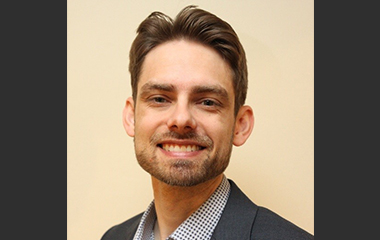
Stroke is the leading cause of adult disability in the US. The purpose of this research is to better understand the role of slow wave sleep (SWS) in post-stroke recovery by using chemogenetics to locally manipulate SWS and track recovery. This has the potential to clarify the basic mechanisms of how SWS regulates neuronal repair and recovery after stroke with the ultimate goal of identifying novel, sleep-based stroke rehabilitation therapies.

Insomnia with short sleep duration (SSD) may represent a high-risk phenotype. This project will test whether insomnia with actigraphy-confirmed SSD is more strongly associated with adverse outcomes than insomnia with subjective SSD in older persons. It will also evaluate how aging-related factors cluster and contribute to insomnia with SSD. This research will create an aging approach for diagnosing insomnia and may identify those older persons most at risk for adverse health outcomes.
2018 Bridge to Success Grant Recipients

Many people with narcolepsy have episodes of cataplexy, sudden weakness triggered by positive emotions. The amygdala mediates behavioral responses to emotions, and these experiments will determine if cataplexy is triggered by a specific class of neurons in the central nucleus of the amygdala that activate brainstem pathways that regulate the paralysis of REM sleep. By improving our understanding of cataplexy, this research should bring us closer to better treatments for narcolepsy.
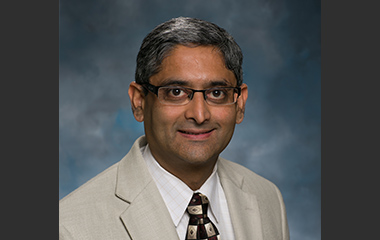
A very high prevalence of obstructive sleep apnea (OSA) has been found in the WTC responder population with an increased risk for OSA in subjects with chronic rhinosinusitis. The present project will examine the impact of upper airway sensory impairment from chronic rhinosinusitis on the development of OSA. In addition, other potential mechanisms for development of OSA will also be examined. The results of this study will help target therapeutic interventions in the future.

More than half of returning Veterans who screen positive for hazardous drinking report clinically significant symptoms of insomnia. In turn, insomnia symptoms have been associated with increased risk of alcohol-related problems, perhaps due to insomnia-related impairments in executive functioning, negative emotionality, and craving. The proposed project examines improvements in insomnia as a mechanism for improvement in alcohol use among heavy-drinking Veterans with insomnia via randomized controlled trial. This will inform prevention and intervention efforts.

Stroke is the leading cause of adult disability in the US. The purpose of this research is to better understand the role of slow wave sleep (SWS) in post-stroke recovery by using chemogenetics to locally manipulate SWS and track recovery. This has the potential to clarify the basic mechanisms of how SWS regulates neuronal repair and recovery after stroke with the ultimate goal of identifying novel, sleep-based stroke rehabilitation therapies.
2018 Focused Projects Grant Recipients – Educational

Social workers often serve populations who experience health disparities. However, social work programs rarely incorporate sleep health training in their curriculum. To improve public health through promotion of healthy sleep practices, this project will develop and assess an online learning module for social work students at Florida Atlantic University. The overarching goal of the module is to equip social work students with the education and training to promote sleep health among their clients.

Sleep and circadian science are examples of successful interdisciplinary research and collaboration. Sleep and circadian science are rarely found in undergraduate curricula. This project will develop an online course to introduce sleep and circadian basics to first-year undergraduate students from all disciplinary backgrounds. Students will gain an appreciation of the role of sleep and circadian rhythms in daily life and a recognition of the need for interdisciplinary understanding and multidisciplinary teamwork in today’s complex world.
2018 Focused Projects Grant Recipient – Humanitarian

Studies suggest emotional distress/ stress are important factors contributing to sleep disturbance in Hispanic immigrants. This is a preliminary investigation into efficacy of auricular acupuncture for improving sleep through mitigating emotional distress/ stress. The study design compares sham and true auricular acupuncture intervention groups on measures of ethnic discrimination, acculturation stress, sleep, and emotional stress over 5 weeks. The study will inform future larger studies and is an intervention readily implemented for Hispanic immigrant communities.
2018 Focused Projects Grant for Junior Investigators Recipients
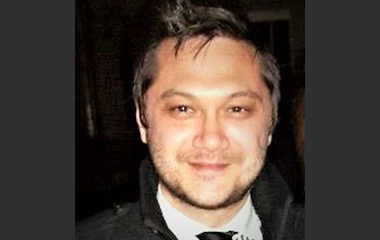
Insomnia is endemic to pregnant women and increases risk for perinatal depression. Rumination, a modifiable cognitive factor, may link insomnia to depression. Our randomized controlled trial compares digital cognitive-behavioral therapy for insomnia (dCBTI) vs sleep hygiene education control. We predict that pregnant women with insomnia who receive dCBTI will report lower levels of insomnia and rumination than controls, and that reductions in insomnia and rumination will be associated with lower levels of postpartum depression.
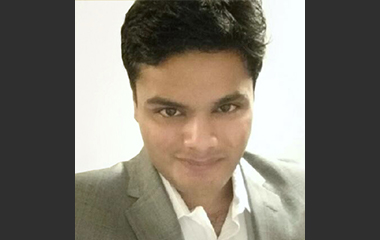
There is substantial individual variability in excessive daytime sleepiness among obstructive sleep apnea (OSA) subjects that is not fully captured by conventional polysomnographic measures. We hypothesize that EEG slow-wave measures are sensitive markers of OSA-induced sleep fragmentation that map to changes in medial prefrontal cortex and to changes in vigilance in OSA subjects. To test this hypothesis, we will use functional neuroimaging during psychomotor vigilance test after nocturnal polysomnography, pre- and post-treatment of OSA.
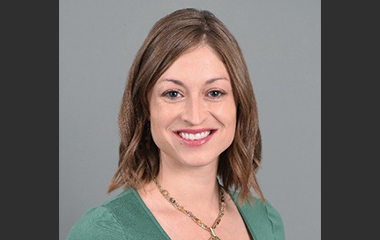
Evidence suggests that insomnia may generate atherosclerotic development, though few studies have identified early markers of subclinical cardiovascular disease in diagnosed insomnia compared to rigorously-defined good-sleeping controls. We hypothesize in the proposed research that patients with insomnia will have greater endothelial dysfunction, arterial stiffness, and evidence of cardiac structural aberrations than will good sleeping controls. In this study, community-based young adults with diary and actigraphy-assessed insomnia compared to good-sleeping controls will undergo cardiovascular sonography assessment.
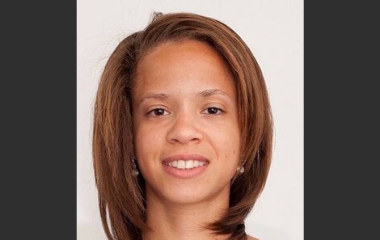
Cannabis use is on the rise in the United States with many users asserting improvements in sleep. Yet, clinical evidence that cannabis alters sleep-wake cycles remains unclear. The central hypothesis of the proposed research is that sleep is differentially affected by an acute oral dose of THC in frequent vs. non-cannabis users. This will be assessed by measuring polysomnographically scored sleep before and after exposure to a standard THC dose.

Among patients with obstructive sleep apnea (OSA), arousals related to respiratory disturbances can occur frequently and contribute to poor sleep and many deleterious sequelae. Knowledge on the neural mechanisms of respiratory arousals is needed for developing novel treatment approaches that suppress these arousals and improve sleep. This study will conduct functional magnetic resonance imaging (fMRI) with simultaneous electroencephalography (EEG) and respiratory monitoring in OSA patients during sleep. The team will test the hypothesis that during respiratory arousals, the somatosensory cortex in both hemispheres is strongly activated and has elevated HIFC, which corresponds to increased interhemispheric EEG coherence, whereas cortical regions implicated in spontaneous arousals may not be strongly activated. This study will pioneer the use of combined EEG-fMRI during sleep in OSA and facilitate future studies to understand and treat respiratory arousals in sleep breathing disorders.
2018 Strategic Research Grant Recipients

Treatment of obstructive sleep apnea (OSA) may prevent cardiovascular (CV) events, but benefits of positive airway pressure (PAP) are related to adherence. To evaluate the impact of high PAP adherence on risk of CV events and healthcare utilization (HCU) in OSA patients, we will conduct a retrospective cohort study using a 5% sample of Medicare claims 2007-2015. We hypothesize that high PAP adherence is associated with reduced risk of CV events and reduced HCU.

Obstructive sleep apnea (OSA) increases Alzheimer’s disease (AD) risk, but the effects of PAP therapy on AD biomarkers prior to cognitive decline are unknown. We found that OSA disrupts slow wave sleep activity in brain regions associated with greater amyloid burden. In this study we will examine the impact of PAP therapy on amyloid and tau accumulation, cognitive decline, and local sleep disturbance in older adults with OSA and at increased risk for AD.

Obstructive sleep apnea (OSA) is common and underdiagnosed in law enforcement officers (LEOs). Adherence to first-line therapy, positive airway pressure, is low. This is a randomized pilot study that compares usual care against a novel pathway that uses telemedicine and care management to promote adherence to PAP. We anticipate that, at the end of two years, our novel program will result in improved sleepiness and workplace outcomes and lower healthcare costs, compared against usual care.

The purpose of this study is to develop and validate pediatric narcolepsy patient reported outcome measures (PN-PROs) for patients 8-17 years of age. Currently, there are no validated outcome measures that encompass the broad range of pediatric narcolepsy symptoms and their impact on safety and academic and social functioning. The PN-PROS will fill this gap by providing outcome measurements needed for pediatric narcolepsy clinical management, clinical trials and other research studies.

There is a critical need for an automated solution that translates polysomnographic physiological data to inform accurate and personalized cardiovascular risk prediction in patients with obstructive sleep apnea. This proposal will develop a platform that automates signal-processing steps and implements cardiovascular risk prediction models derived from the analysis of the Sleep Heart Health Study data. We hypothesize that this tool will improve cardiovascular risk prediction when compared to demographic, clinical or conventional polysomnographic factors alone.

Treatment of patients with central disorders of hypersomnolence is hampered by limited data from: 1) comparative efficacy studies between different medications; 2) controlled trials for some medications; and 3) controlled trials for some diagnoses (e.g., idiopathic hypersomnia). We seek to inform clinical decision-making by completing a controlled trial, directly comparing the effects of modafinil and amphetamine-dextroamphetamine (i.e., amphetamine salts) on patient-oriented outcomes, in the treatment of patients with the narcolepsy type 2 and idiopathic hypersomnia.
2018 ABSM Junior Faculty Grant Recipient

Obstructive sleep apnea (OSA) is a prevalent condition and has been associated with increased mortality. It is unknown whether OSA-related changes on markers of ventricular repolarization are responsible for mediating the relationship between OSA and death. A retrospective analysis of existing sleep study databases will be performed to review baseline markers of ventricular repolarization in patients with OSA and evaluate the impact of apneas/hypopneas and all modes of noninvasive ventilation on markers of ventricular repolarization and mortality.
Past Recipients
Project Results
Discover the direct impact our completed projects have had on improving patient care and evolving sleep health science.
SLEEP Research
The AASM Foundation proudly provided funding for the following research projects presented at SLEEP 2019.

